Lee Kuan Yew: Building and Keeping a Nation
Guillaume Durocher, American Renaissance, December 24, 2021
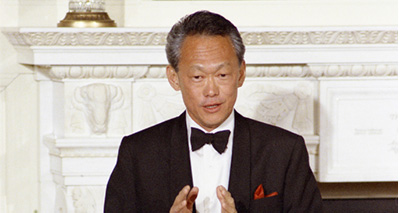
Lee Kuan Yew, Singapore’s founding father and long-time prime minister (1959–1990), should be a role model for nationalists across the West. Lee was not a philosopher but a practical politician, so his insights are not theoretical but the product of three decades of leadership.
Lee was able to adapt to changing circumstances, eliminate Communist threats, maintain political stability, and reach astonishing levels of prosperity. All this in a small, insecure city-state with no history of independent self-government, in a region marked by aggressive geopolitics and sharp ethnic conflicts. Lee understood not only human capital, racial differences, and ethnic conflict, but navigated these realities to build a thriving nation for his people.
The wreckage of the British Empire
For most Westerners, southeast Asian countries scarcely register as anything other than tourist destinations and old war zones, but they offer interesting cases studies of the difficulties of nation-building and ethnic conflict.
Under the British, what are now Malaysia and Singapore were governed by administrators, such as Stamford Raffles, who ruled with a combination of commercial acumen and genuine moral concern. Economic opportunity brought many Indian and Chinese immigrants to the area. There has been ethnic conflict ever since, especially between the native Malays and the Chinese. By the 1950s, locals of all races wanted independence, but how to create coherent, free, and prosperous nations from heterogeneous human material?
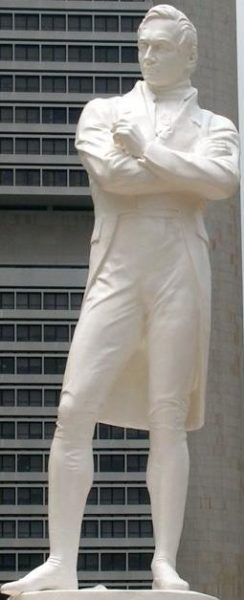
Statue of Sir Stamford Raffles in Singapore (Credit Image: Wachholder0 via Wikimedia)
Singapore is a small island of just 281 square miles, off the Malaysian coast. Whereas the Chinese diaspora are a scattered minority in the rest of southeast Asia, in Singapore they have long been a majority of 75 percent, the rest of the population being mostly Malays (15 percent) and Indians (7.5 percent).
In the 1950s, Communism was popular among many Singapore Chinese, inspired by Mao Zedong’s triumph on the mainland. Lee Kuan Yew tried to prevent the Bolshevization of Singapore by merging it into a larger country with a conservative Malay majority: Malaysia. This lasted from 1963 to 1965, with Singapore leaving because of ethnic chauvinist policies of the central government dominated by Malay nationalists. Lee said, “I had believed in the merger and unity of these two territories, with people connected by geography, economics, and ties of kinship.” His voice shook as he spoke the final words. This left Singapore alone, surrounded by the much larger, generally hostile Muslim states of Malaysia and Indonesia.
An Illiberal, Stable, and Prosperous Democracy
Lee set about building a new nation with a patriotic people, a prosperous economy, and political stability. He ensured stability with “illiberal” democracy: There were elections at least every five years, but opposition parties could operate only with difficulty, if at all. Communists, Communist sympathizers, and “chauvinists” of various stripes (ethnic, linguistic, or religious) were repressed and excluded from political life. The government had great influence over the media and the ruling People’s Action Party (PAP) ruled an essentially one-party, parliamentary state. Lee also kept close ties with Britain and America as guarantees in the face of foreign threats, Communist or otherwise.
East Asia is the only region in the “global south” with countries that have been able to equal or even surpass Western standards of living. The rest, in the words of Francis Fukuyama, are perpetually trying to “get to Denmark.” Most of the successful nations caught up to the West thanks to stability through authoritarian or non-electoral governments. This has been the case not only in Singapore, but in China, Taiwan, Hong Kong, and also to some extent in Japan and South Korea. Typically, there is collaboration between government and big business together with a high savings rate for reinvesting profits. Once the country is wealthy, with a secure middle class, liberal democracy may then be instituted.
Lee Kuan Yew never trusted Western democracy; he refused to import divisive, multiparty politics. He thought the best people should rule through a meritocratic system of selection and make enlightened long-term plans. He thought this would be impossible under a democratic system susceptible to short-sightedness and demagogy. But whereas South Korea’s and Taiwan’s non-elected illiberal regimes collapsed, the Singapore government’s legitimacy has been continually refreshed at the ballot box, with popular support for authorities who gut liberalism when needed.
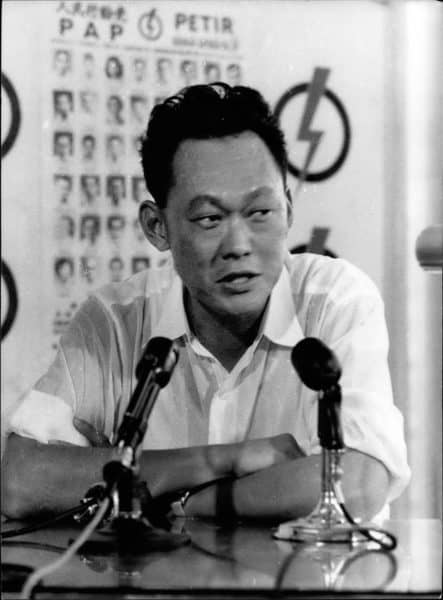
Jun 6, 1959 – Singapore – Lee Kuan Yew speaks during a People’s Action Party press conference after the PAP won 43 of the 51 seats in the legislative assembly. (Credit Image: © Keystone Press Agency / Keystone USA via ZUMAPRESS.com)
Lee did not reject all the Western practices inherited from the British. He was impressed by the capacity of Western capitalism to stimulate economic growth. With a sharply rising population, Communist agitation among the unemployed, and the end of Singapore’s previous role as a trade hub for the British Empire, the island needed a new model. Lee tried to enrich Singapore through world trade and investment.
In many post-colonial nations, infrastructure and public services declined when the British left. Many of the new governments were chauvinist and socialist. They seized foreign- and minority-owned businesses, which destroyed the trust and incentives needed for economic activity. Together with native incompetence and corruption, this led to stagnation, isolation, and underdevelopment, from Burma to Indonesia.
Lee stamped out corruption and protected all private property and foreign investments. The result was massive Western and Japanese investment, and Singapore benefited enormously from transfers of technology and know-how. In 1965, Singapore’s GDP per capita was US $500, today it is around $60,000 (equivalent to $100,000, considering the low cost of living).
Few governments, whether democratic, liberal, or authoritarian, can claim the continuous legitimacy and popularity that the Singapore regime has enjoyed. Voters supported Lee because he faced down Communists, eliminated corruption, and — last but not least — produced results: decades of political stability and economic growth. The Singapore authorities have kept their peculiar system of government even after Lee left the premiership in 1990.
Biopolitics I: The importance of human capital
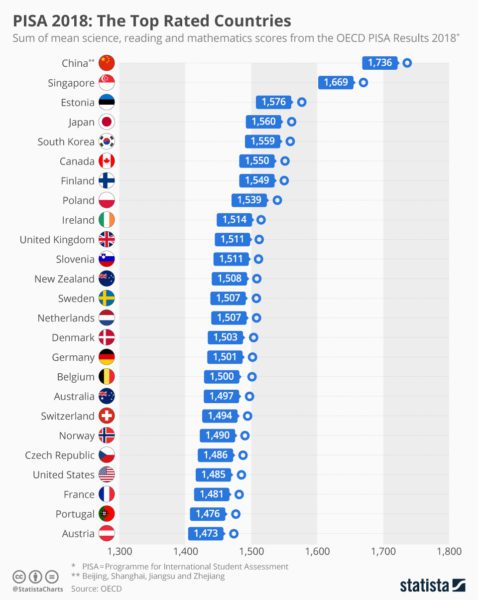
Singapore also practices what can be called biopolitics: policies that affect the biological character of the people through immigration, reproduction, and identity formation. Lee wanted to turn the diverse population of Singapore into patriotic citizens. This meant making as many Singaporeans as possible employed property owners with a stake in the new country. He conscripted young men for two years of military service; the island needed citizen-soldiers in case of hostile action by Malaysia, Indonesia, or some Communist power.
As the leader of a resource-poor country trying to copy Japan’s success, Lee promoted “talent,” by which he meant a combination of brains and personality traits suitable for high office in politics and business. Government officials scoured Asian and Western universities to recruit the best Chinese, Malay, and Indian students for the Singapore workforce.
Lee had no doubt that “talent,” including intelligence, had a significant genetic component. He cited Western IQ research and twin studies showing that intelligence differences between individuals are 50 to 80 percent genetic. In the 1980s, Lee was alarmed by the collapse of child-bearing among educated Singaporean women and tried to raise their fertility and lower that of the uneducated. Eugenic policies were unpopular, mostly ineffective, and soon phased out, but Lee told his children to marry a smart spouse if they wanted bright children.
Biopolitics II: Fostering racial identity and harmony
Singapore built a meritocratic system under a unique multi-racialist ideology. Including the Malay Muslim minority, in particular, was meant to pacify relations with Singapore’s nativist Malaysian and Indonesian neighbors. However, in contrast with Western multiculturalism — which demonizes the white majority’s identity while celebrating identities of all non-whites — Singapore’s multi-racialism celebrates the racial identity of all communities, not least the Chinese majority.
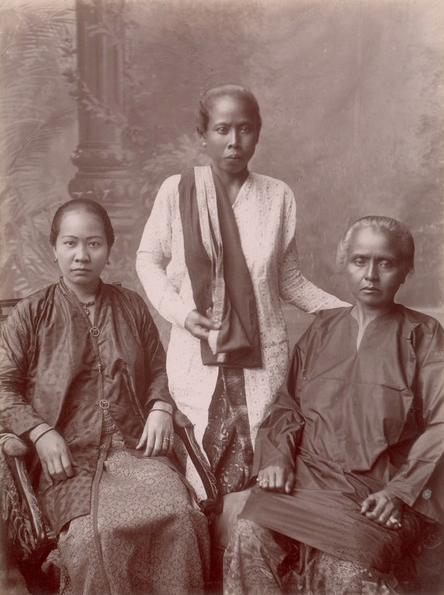
A Chinese, a Malay and an Indian woman in Singapore circa 1890. (Credit Image: Leiden University Library via Wikimedia)
Lee saw cultivating ties of family and racial identity as essential to countering Western cultural and capitalist individualism. Singapore’s generous housing policy encourages family formation and keeps grandparents nearby. Racial self-help associations build community support and encourage students to study. Lee started a policy of bilingualism with English as Singapore’s neutral main language, but with mandatory instruction in each “mother tongue:” Chinese learn Mandarin, Malays Malay, and Indians Tamil (or another Indian language). Teaching Asian languages was meant to give Singaporeans “cultural ballast” in the face an emerging Anglo-American global monoculture.
“Mother tongues” deepen each race’s culture and heritage, and heighten connections with the rest of Asia. There is evidence that race and language help form ethnic identities: Even infants prefer seeing faces of their own race and hearing voices with their family’s language and accent. Lee imposed Mandarin on all Chinese. It was not the mother tongue of those who spoke the Hokkien dialect or even English, as Lee did. However, teaching the majority of Singaporeans English and Mandarin made the country a bridge between the West and China.
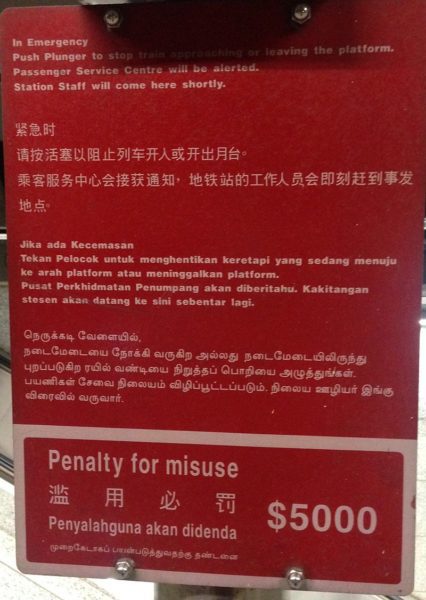
A warning sign in the four official languages of Singapore (English, Mandarin, Malay, Tamil) found in all Mass Rapid Transit stations. (Credit Images: Danielseoh via Wikimedia)
Biopolitics III: Lee as a Chinese ethnic realist
Lee was well aware of the weaknesses of any multi-racial society and he tried to limit the dangers. In a conflict with Singapore’s neighbors, many Malay Muslim citizens might feel more solidarity with enemies rather than with Singapore. Malays were therefore exempted from conscription and police work, although this policy was later relaxed.
Lee understood racial differences. Observers had long noticed that Malays were easy-living and “lethargic,” while Chinese were driven and entrepreneurial. Lee Kuan Yew and a Malaysian nationalist prime minister Mahathir Mohamad had similar views: the Chinese had been selected by a culture of study and hard work, as well as by cold winters in China; tropical Malays had not. On trips to Europe, Lee remarked on the differences between efficient Germans and easy-going Italians. He was also aware of differences in performance and social outcomes in the United States. He said in a 1982:
Let us not deceive ourselves: our talent profile is nowhere near that of, say, the Jews or the Japanese in America. The exceptional number of Nobel Prize winners who are Jews is no accident. It is also no accident that a high percentage, sometimes 50 percent, of faculty members in the top American universities on both the east and west coasts are Jews. And the number of high-caliber Japanese academics, professionals, and business executives is out of all proportion to the percentage of Japanese in the total American population.
Lee was also impressed by Richard Herrnstein and Charles Murray’s The Bell Curve. He told his authorized biographers:
The bell curve is a fact of life. The blacks on average score 85 percent on IQ and it is accurate, nothing to do with culture. The whites score on average 100. Asians score more . . . . The Bell Curve authors put it at least 10 points higher. These are realities that, if you do not accept, will lead to frustration because you will be spending money on wrong assumptions and the results cannot follow.
In a 1993 article written for The Economist, Lee predicted that Japan, Korea, Taiwan, Hong Kong, coastal China, and Singapore would become very prosperous in the next century, while the rest of Asia would not. National differences were due to “a people’s culture, heredity, and organizational strengths.” Lee was right.

Panoramic view of Singapore’s Central Business District (Credit Image: Ray in Manila via Wikimedia)
Lee’s policies made it possible to build an island of racial harmony in a world of ethnic tensions. In neighboring Malaysia, the Malays officially discriminate against the Chinese (who dominate much of the economy and are overrepresented in universities). Southeast Asia has seen many race riots, mostly targeting ethnic Chinese. Singapore is a success story.
There was also no denying Lee’s pride in his Chinese identity. In an exuberant post-election victory speech in 1977, he told a multi-racial audience: “I understand the Englishman. He knows deep in his heart that he is superior to the Welshman and the Scotsman. . . . Deep here, I am a Chinaman.” Lee’s policies quietly maintained Singapore’s 75-percent Chinese majority. In his 1989 National Day speech he said changing the country’s ethnic composition would mean “a shift in the economy, both the economic performance and the political backdrop which makes that economic performance possible.”
Academics cried “racism” but there is no denying Lee’s successes. Few populations are as studious and hard-working as overseas Chinese, and Lee’s brand of politics probably would not be possible without a large Chinese majority. Singapore would be much more fractious if there were no majority and, in particular, if the majority were not East Asian. To this day, Singapore has officially maintained a successful policy of “maintaining the racial balance,” just as the United States tried to do with the Immigration Act of 1924.
Biopolitics IV: The failure of family formation
Lee had one great failure: family formation. Immigration has kept Singapore majority-Chinese, but the fertility rate is a catastrophic 1.15, and an aging population may have to resort to replacement-level immigration. Singapore has ambitious and generous policies to encourage child-bearing, but they don’t work. However, all 10 of Asia’s least fertile countries are in the east or southeast, so this is a regional problem:
| Country | Fertility Rate |
| Malaysia |
1.76 |
| Brunei |
1.75 |
|
China |
1.60 |
| Thailand |
1.54 |
| Japan |
1.38 |
| Hong Kong |
1.22 |
| Macau |
1.21 |
| Singapore |
1.15 |
| South Korea |
1.09 |
| Taiwan |
1.07 |
Lee turned Singaporeans into bourgeois consumers for whom no level of wealth seems to be enough. In the 1960s, Singaporeans lived on almost nothing and had a fertility rate of around six. Today, Singaporeans avoid having children so they can pursue careers. Lee’s corporate and multi-racial style of politics didn’t succeed in making a tribal appeal to perpetuate one’s people — as the Israelis have done (the Jewish fertility rate in Israel is now around three).
A great Asian statesman and nation-builder
Singapore’s successes reflect the country’s ability to keep economic elements of the British colonial inheritance along with Asian traditions and habits. Success came from Anglo institutions and Sinic virtue. Lee Kuan Yew almost seems like an Asian archeofuturist. Low fertility is a failure, but just such a hypermodern society may be the one that finds solutions to dysgenic trends.
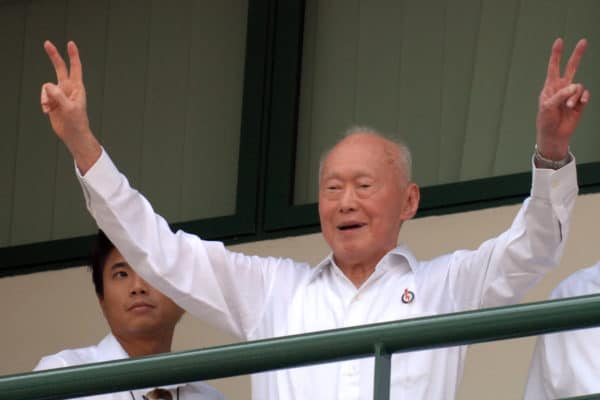
Mar 18, 2015 – Singapore – Former Prime Minister of Lee Kuan Yew raising his arms in victory after being declared the winner of Tanjong Pagar Group Representative Constituency at the close of Nomination Day. (Credit Image: © Xinhua via ZUMA Wire)
Few politicians have steely-eyed realism and deft implementation. A combination of forcefulness and subtlety was the key to Lee’s success. From the ethnic flotsam of a dissolving British Empire, Lee Kuan Yew built a prosperous nation for his people. Europeans from South Africa to North America may some day make new nations out of the wreckage of the globalized West. They should study this great Asian statesman.















